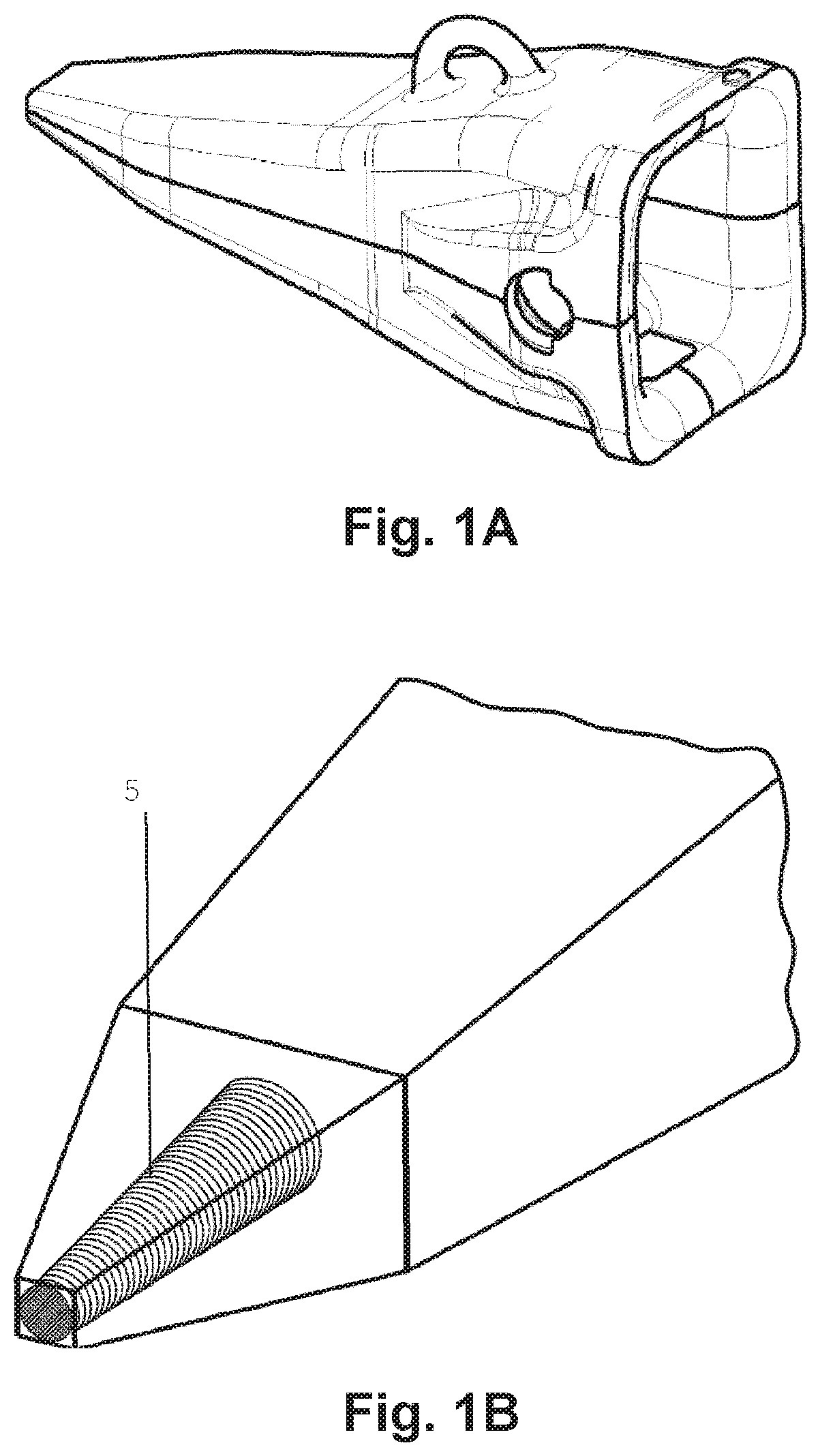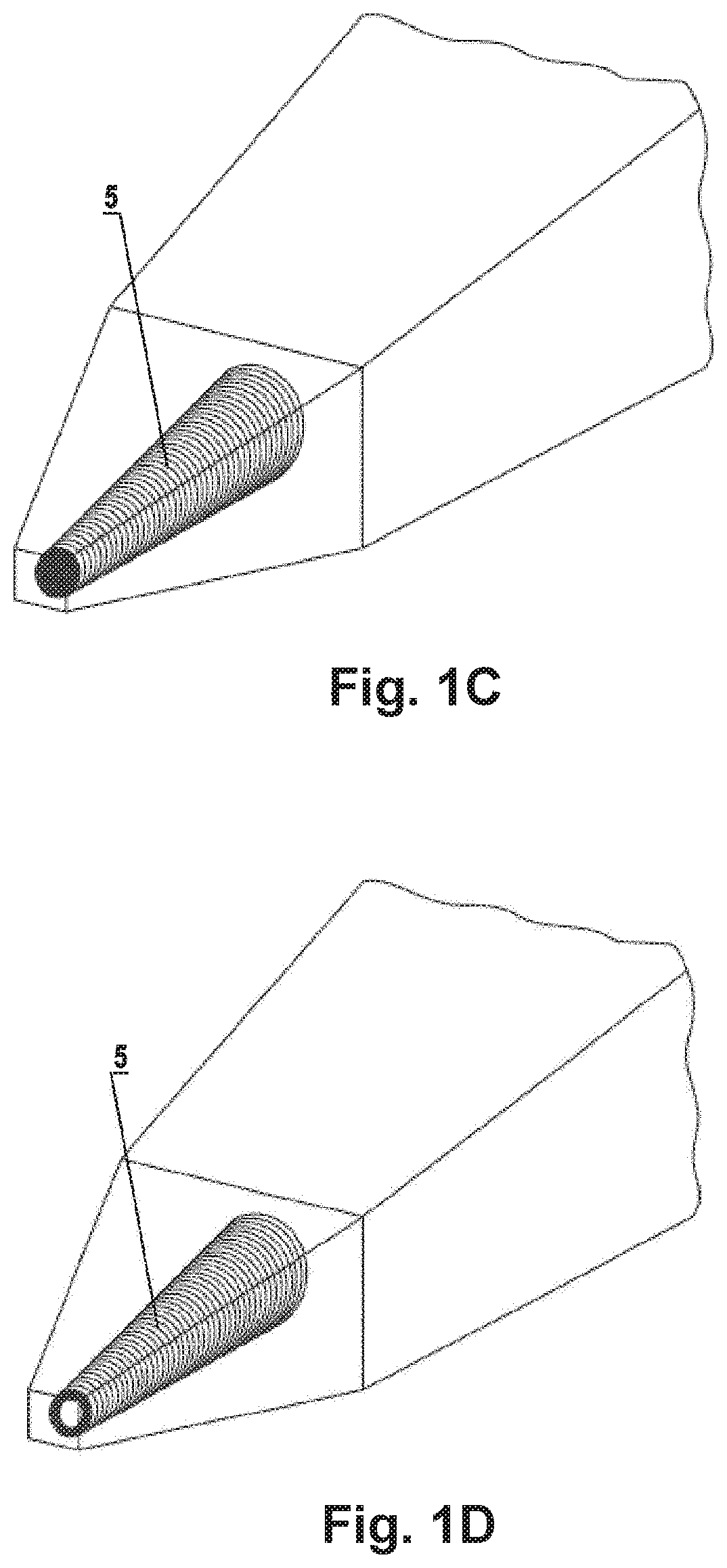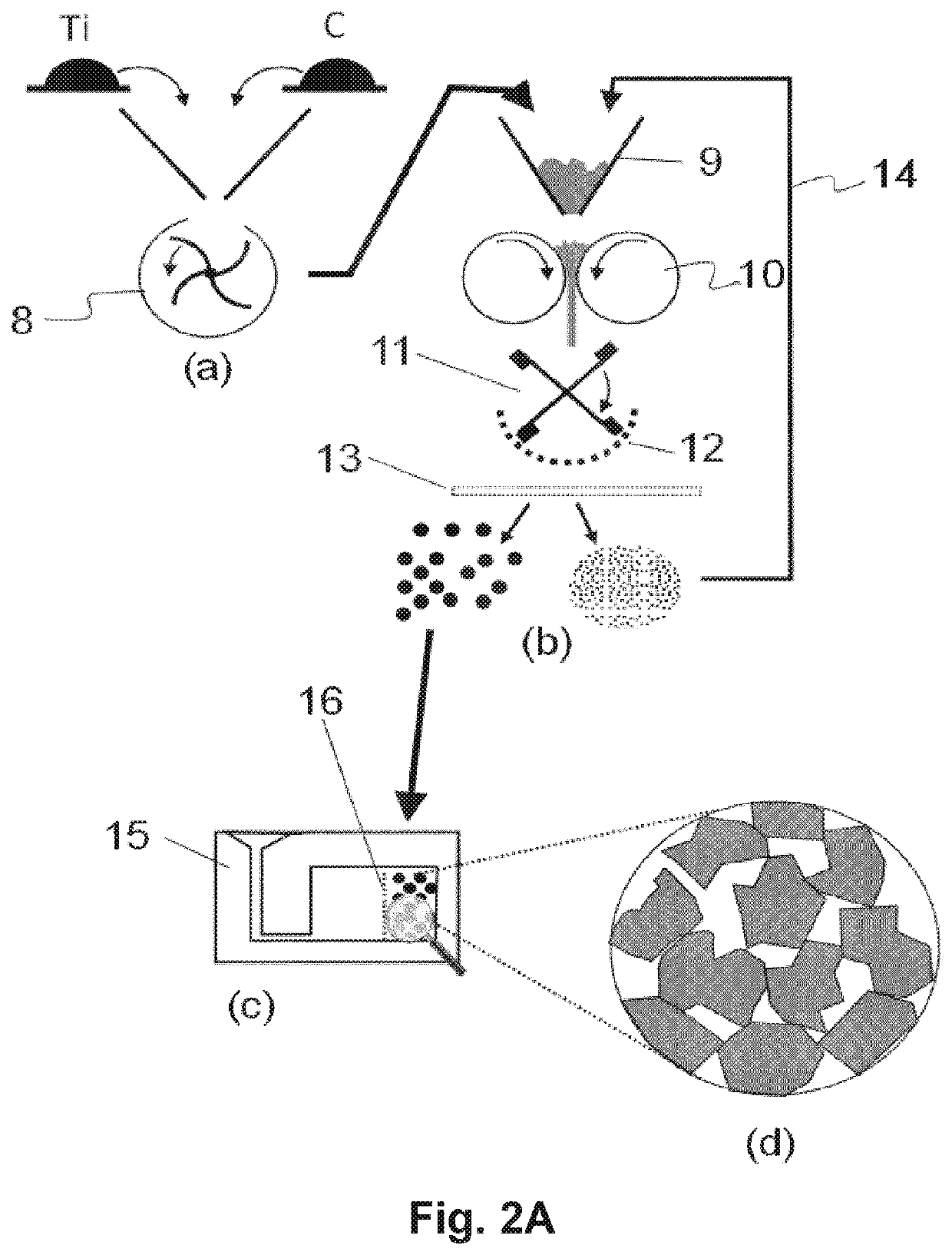Composite tooth with frustoconical insert
a technology of composite teeth and inserts, applied in the field of composite teeth, can solve the problems of not being able to ensure the same performance as a tooth, not being integrated into the metal matrix of the tooth, etc., and achieve the effects of reducing the cracking phenomenon of the tooth, reducing the overall concentration of ceramics in the part, and reducing the rejection ra
- Summary
- Abstract
- Description
- Claims
- Application Information
AI Technical Summary
Benefits of technology
Problems solved by technology
Method used
Image
Examples
example 1
[0098]In this example, a powdered ferrous alloy is added to the carbon-titanium mixture so as to attenuate the intensity of the reaction between carbon and titanium. The aim is to produce a tooth in which the reinforced areas comprise an overall volume percentage of TiC of approximately 30%. For this purpose, a strip is produced by compaction to 85% of the theoretical density of a mixture of 15% C, 63% Ti and 22% Fe by weight. After crushing, the granules are sifted so as to obtain a granule size between 1.4 and 4 mm. A bulk density of the order of 2 g / cm3 is obtained (45% of space between the granules+15% of porosity in the granules). The granules are placed in a container which thus comprises after tamping and / or vibration 60% by volume of porous granules, taking into account the perforations made. After reaction, 60% by volume of areas with a high concentration of approximately 55% globular titanium carbides are obtained in the reinforced portion, i.e. 33% by overall volume of ti...
PUM
| Property | Measurement | Unit |
|---|---|---|
| size | aaaaa | aaaaa |
| size | aaaaa | aaaaa |
| size | aaaaa | aaaaa |
Abstract
Description
Claims
Application Information
 Login to View More
Login to View More - R&D
- Intellectual Property
- Life Sciences
- Materials
- Tech Scout
- Unparalleled Data Quality
- Higher Quality Content
- 60% Fewer Hallucinations
Browse by: Latest US Patents, China's latest patents, Technical Efficacy Thesaurus, Application Domain, Technology Topic, Popular Technical Reports.
© 2025 PatSnap. All rights reserved.Legal|Privacy policy|Modern Slavery Act Transparency Statement|Sitemap|About US| Contact US: help@patsnap.com



